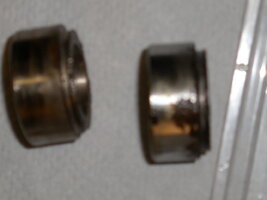I’m asking, if there are relief valves in hydraulic systems, because I don’t know ?So you're saying that your hand or foot pressure exceeds the sealing capacity of the brake system if applied for too long a period of time because there is no relief valve?
Jason
I also don’t design brake systems, but can imagine there are some basic differences between the two systems.
What are the design constraints the engineers have to keep in mind when designing “Those systems”
i am Again imagining that the “duty cycle” for any brake system would be seconds, not hours or days ?
Would having the system under load ( pressure ) for hours or days have an adverse effect on seals in that system ?
Are there rubber seals in the Master cylinder like there are in the slave ( calipers ) ?
i don’t know , I’ve never taken one appart ?
That’s not what I do for a living ?

